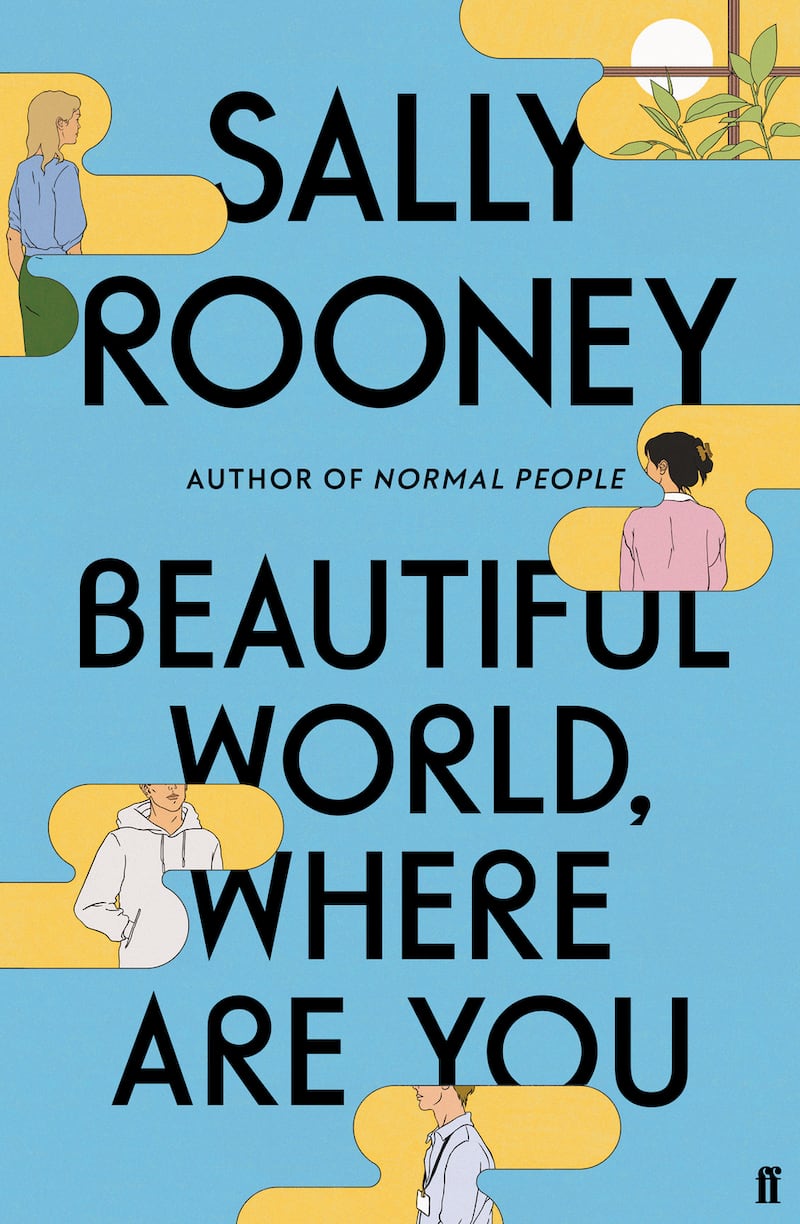Readers looking forward to Sally Rooney’s third novel, Beautiful World, Where Are You, to be published by Faber & Faber in September, have been given a tantalising taster in the latest edition of the New Yorker.
Advance proof copies of the highly-anticipated book by the acclaimed and bestselling author of Conversations with Friends and Normal People have been hard to come by in the industry, so the 9,000-word extract, entitled Unread Messages, is all the more intriguing.
Narrated in the close third person, the extract introduces us to 29-year-old Eileen and Simon, her friend from childhood who is five years older. He asks her advice on two friends, who “had been living together as roommates, and then had become involved in some kind of ambiguous sexual relationship”. The shadow boxing in their conversation suggests what is later confirmed – that they too have an ambiguous sexual relationship.

The prose is crisp, cool, confident in its unshowiness, the contemporary Dublin milieu a familiar one to admirers of Rooney’s work.
We gradually learn that Eileen has a rivalry with her older sister Lola, who is getting married. “You must be so happy for her. Yeah, it’s funny, Eileen would say. I’m not.” She has an English degree, where she met her best friend Alice, a masters in Irish literature and now works for a literary magazine – there is a funny vignette of a poetry evening – while Alice has become a successful novelist but with a troubled personal life.
We see Eileen fall in love and be left. She tortures herself by stalking her ex and his contacts online.
Meanwhile, friends are leaving the unaffordable capital. “In living rooms with low ceilings and paper lampshades, people talked to her about the property market.”
With late capitalism's flaws far from theoretical and all too apparent, Eileen wryly observes: "When I first started going around talking about Marxism, people laughed at me. Now it's everyone's thing." (A dispute about what constitutes a working-class identity feels timely, given tomorrow's online launch of The 32, an anthology of working class Irish writers, edited by Paul McVeigh).
More left-field perhaps is Simon’s Catholic faith, though its very a la carte nature – he fornicates before Communion rather than fasts – suggests that he will not be a guilt-ridden figure a la Graham Greene.
In an accompanying interview, Rooney reveals: "As a religious person, as a Catholic, he wants to follow the teachings of Jesus, and we can imagine that Christian philosophy has been a source of insight and fulfilment for him in his life. At the same time, to live by the teachings of Jesus is a complex and maybe even impossible task. In this short story alone, Simon seems to fail at that task in a number of ways."
Questioned about her choice to stay outside her character’s head, Rooney says: “I’m growing more interested in the inadequacy of our views of other people – in fiction and in life.In this piece, we don’t get much direct insight into what Eileen is thinking or feeling.”
Responding to a question about the open-ended nature of much of her writing, Rooney says: “I think what I like (as a reader and a writer) is the middle of a story – when the characters and their world have already been established, and we get to dwell in their atmosphere and develop an understanding of their lives.
“In my non-working life, I play a little bit of chess (very poorly), and the phase of play that I like best is the middle game, after the formal opening is out of the way, when the idea of the game starts to clarify. As a novelist, I think I aim to sustain that middle-game feeling throughout the work – to begin in medias res, and to close with a certain sense of incompleteness, as if the characters are simply going on with their lives off the page... At the same time, I do want my novels and stories to illustrate some significant period of change for the protagonists.”
One critic has already compared the extract to an Edward Hopper painting, which has the ring of truth: the soullessness of modern life with a soulful human loneliness at its heart. But it makes me think of pointillism too. Each seemingly pointless or inconsequential detail of Eileen’s desk-job drudgery, such as the proofreader’s dots she inserts after the initials of WH Auden at every mention, is in fact the following of a style guide that will deliver a satisfying and necessary consistency to the work as a whole, and an accretion of data that will build a believable world, beautiful or otherwise.
By the end of this extract, Eileen’s air of detachment has evaporated as she drops her guard and lays her heart bare to her oldest friend and sometimes lover, a decision and a declaration whose consequences will be revealed only when Beautiful World, Where Are You hits the bookshelves on September 7th.
Martin Doyle is Books Editor of The Irish Times



















